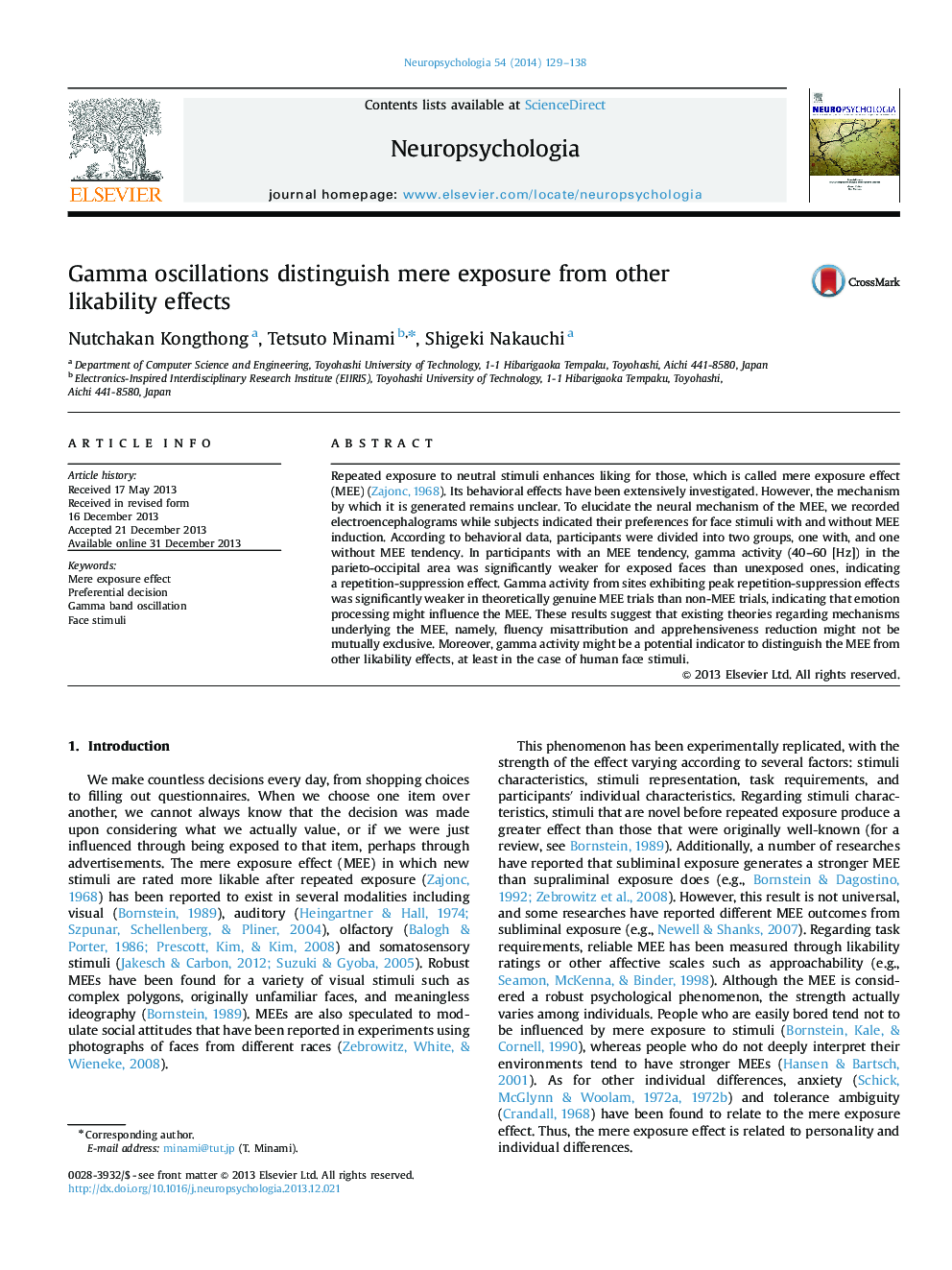| Article ID | Journal | Published Year | Pages | File Type |
|---|---|---|---|---|
| 944783 | Neuropsychologia | 2014 | 10 Pages |
•We investigated positive attitude towards stimuli caused by the MEE.•We recorded EEG while subjects evaluated face stimuli.•Gamma activity is an indicator to distinguish MEE from other likability effects.
Repeated exposure to neutral stimuli enhances liking for those, which is called mere exposure effect (MEE) (Zajonc, 1968). Its behavioral effects have been extensively investigated. However, the mechanism by which it is generated remains unclear. To elucidate the neural mechanism of the MEE, we recorded electroencephalograms while subjects indicated their preferences for face stimuli with and without MEE induction. According to behavioral data, participants were divided into two groups, one with, and one without MEE tendency. In participants with an MEE tendency, gamma activity (40–60 [Hz]) in the parieto-occipital area was significantly weaker for exposed faces than unexposed ones, indicating a repetition-suppression effect. Gamma activity from sites exhibiting peak repetition-suppression effects was significantly weaker in theoretically genuine MEE trials than non-MEE trials, indicating that emotion processing might influence the MEE. These results suggest that existing theories regarding mechanisms underlying the MEE, namely, fluency misattribution and apprehensiveness reduction might not be mutually exclusive. Moreover, gamma activity might be a potential indicator to distinguish the MEE from other likability effects, at least in the case of human face stimuli.
